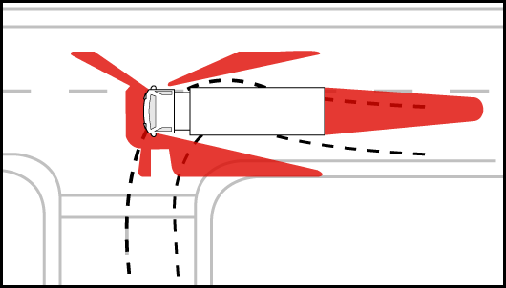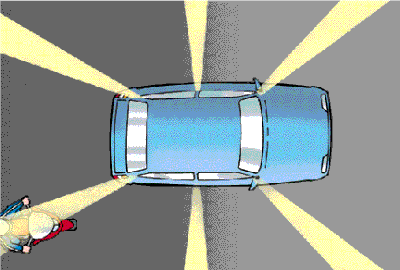Blind Spots – Raising Awareness
We all know them – those spots around the vehicle where you just can’t see. Even with additional mirrors, which were brought in as standard for HGVs in 2009, there are still several large blind spots around your average vehicle.
As part of our new video series, we carried out some visibility tests with a HGV. We wanted to see where the blind spots began and ended. Roger Burton from Roadskills attended a walk-round session with some carefully selected drivers, and carried out a number of tests that show just how large and daunting the blind spots of a HGV are.
Roger is able to reverse his vehicle nearly 200 yards back from the HGV without the driver being able to see his vehicle at all. This just impacts the message of road safety, both for HGV drivers and those they share the road with.
As a HGV driver, it is your responsibility to ensure you check your blind spots as well as you can. Some of the risk can be reduced by thorough checks and a high level of awareness – but even the most road-savvy driver will still have areas that they can’t see.
HGVs

How to manage your blind spots
– Check around the vehicle as thoroughly as you can before moving off.
– Ensure your mirrors are clean, undamaged and angled correctly.
– When pulling out, take your time and signal early. This allows other road users time to react to your presence.
– The more aware you are of the road around you, the more likely you are to notice other road users before they slip into your blind spots.
– Remember that HGVs have a sizeable blind spot directly in front of the cab. When pedestrians are crossing in front of you, allow them plenty of time and check before continuing.
– It is common for cyclists to hide in the blind spots of a large vehicle – in 2014, one of the biggest contributing factors to road accidents was one driver simply not seeing another.
– Remember that other large vehicles will have similar blind spots to you. If driving behind another HGV, ensure you leave plenty of space.
By knowing where the blind spots are, pedestrians should know not to walk too closely, vehicles should know to keep their distance from the rear, and cyclists and motorcyclists could be more aware of how they can pull up beside the HGV and still be seen.
Of course, it’s not just HGV drivers that have blind spots, car drivers have them too. So it’s important for every road user to be aware not just of their own blind spots, but also the blind spots of drivers around them.
Knowing how to react to larger vehicles, where not to sit around them, and how to make yourself visible is all just as important as reducing the risk of your own blind spots. Remember – road awareness is all about seeing risk early and acting to reduce or remove it before danger presents itself.
Cars

How to manage your blind spots
– Ensure that your vehicle is set up correctly. Your seat should not be set too far back. Your wing mirrors should be positioned so that the horizon is in the centre of the pane. Your rear view mirror should show the entirety of the rear window and as little of the interior as possible.
– Check well before moving away.
– Carry out regular, thorough mirror checks. Always check your mirrors before attempting any change in speed or direction.
– When reversing, turn your head to check behind you.
Driving near large vehicles
– Be aware of the blind spots on a large vehicle. Ensure you do not sit in these areas, as you could be invisible to the driver.
– Allow large vehicles plenty of space, particularly from behind. A HGV cannot see a car that is directly behind them, so leave enough distance to allow yourself time to stop.
– When pulling out to overtake a large vehicle, move steadily and ensure you signal in plenty of time so they are aware of your presence.
On one of our on-road training sessions, your drivers will be shown how to minimise the dangers of blind spots as well as heightening their awareness to the risk. These sessions are available across the country at a location of your choosing.
Call 01952 298990 or email us here.
